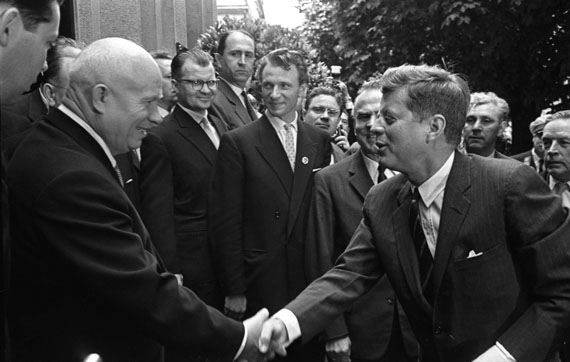
Mikhail Savin »
IT WILL BE A COLD WINTER
Exhibition: 11 Dec 2015 – 24 Jan 2016
Thu 10 Dec 19:00

The Lumiere Brothers Center for Photography
Bolshaya Polyanka street, 61, bld. 1
119180 Moscow
+7 495-228 98 78
Mon-Sat 11-20

IT WILL BE A COLD WINTER
Mikhail Savin
December 11, 2015 – January 24, 2016
Private view – December 10, 7 pm
Curator – Yana Iskakova
The Lumiere Brothers Center for Photography presents a solo exhibition of Mikhail Savin’s work IT WILL BE A COLD WINTER, built around the time and spirits of the “cold” early 1960s.The exhibition marks the centenary of the photographer’s birth.
The name of the project refers to John F. Kennedy’s phrase said after the meeting with the Soviet Premiere Nikita Khrushchev at the crucial Vienna summit held in June 1961. The two leaders failed to negotiate topical issues relating to the Berlin question and disarmament. Kennedy’s words “It will be a cold winter” were to come true just in two months: August 1961 would see the construction of the Berlin wall, symbol of the Cold War confrontation between the two superpowers. A non-party photographer of Ogonyok magazine Mikhail Savin, which is amazing in itself, was lucky to be on official delegations during 11-day visit to France in March 1960 and at the two-day Vienna summit in 1961. The exhibition features photo reports of the official meeting of Khrushchev with Charles de Gaulle and John Kennedy, alongside informal scenes of European everyday life, hardly ever covered by the official Soviet press. A series of winter landscapes, revealing Savin’s profound feeling of space and lyrical nature, serves as a kind of figurative counterpoint to the documentary block.

Apart from coverage of official summit talks, the archive of the photographer shows lively moments of an embarrassed Khrushchev greeting stunning Jacqueline Kennedy, Marseille police keeping back the greeting crowd, hunting gun being presented to the delighted members of Bordeaux city council. Despite the fact that private censorship of the time recommended to cover shortcomings of the capitalist system, Savin’s Vienna, Paris, Verdun, Arles, Bordeaux are clearly romantic and free in spirit. The photographer captures the charm of European streets, evening lights of the Avenue des Champs-Élysées, beautiful cars, street artists of Montmartre and news dealers with their lovely pets, French fashionable women on the boulevards and at the Galeries Lafayette.
Winter landscape holds a special place in Savin’s archive and at the exhibition, being photographer’s dearest genre. His approach resonates with realistic landscape of Anatoli Skurikhin, lyrical pictorialism of Sergei Ivanov-Alliluyev, and reveals typical of the 1960s formal and graphic search, ascending to the Soviet photographic avant-garde of the 1920s. Nature in Savin’s winter landscapes stands still, likewise the world in the early 1960s – waiting for the World War III to begin.
Apart from 60 gelatin-silver prints the exhibition features news footage of European meetings, M. Savin’s diary entries, audio recording of N. Khrushchev memoirs, and thematic press materials of the time.
M. Savin was born in 1915 in Sasovo town, Ryazan Region. He worked as a draughtsman at a factory and later became a turner. During the service at the Red Army from 1937-1938 he entered a two-year course of photojournalism at TASS News agency, where he was recruited as a photographer in the summer of 1939. From 1941, he served as a war photojournalist at the Western front newspaper “Krasnoarmeiskaya Pravda”. He was lucky to go through the war without a single wound. Savin fought in Belarus, Smolensk, Moscow Region, the Kursk Bulge, Lithuania, and Eastern Prussia. After the end of the War, he was hired by the legendary magazine Ogonyok, where he stayed for 50 years. He travelled the whole Soviet Union and 12 foreign countries on assignments for the magazine. Mikhail Savin was awarded The Order of the Red Star, The Medal for Courage. �

